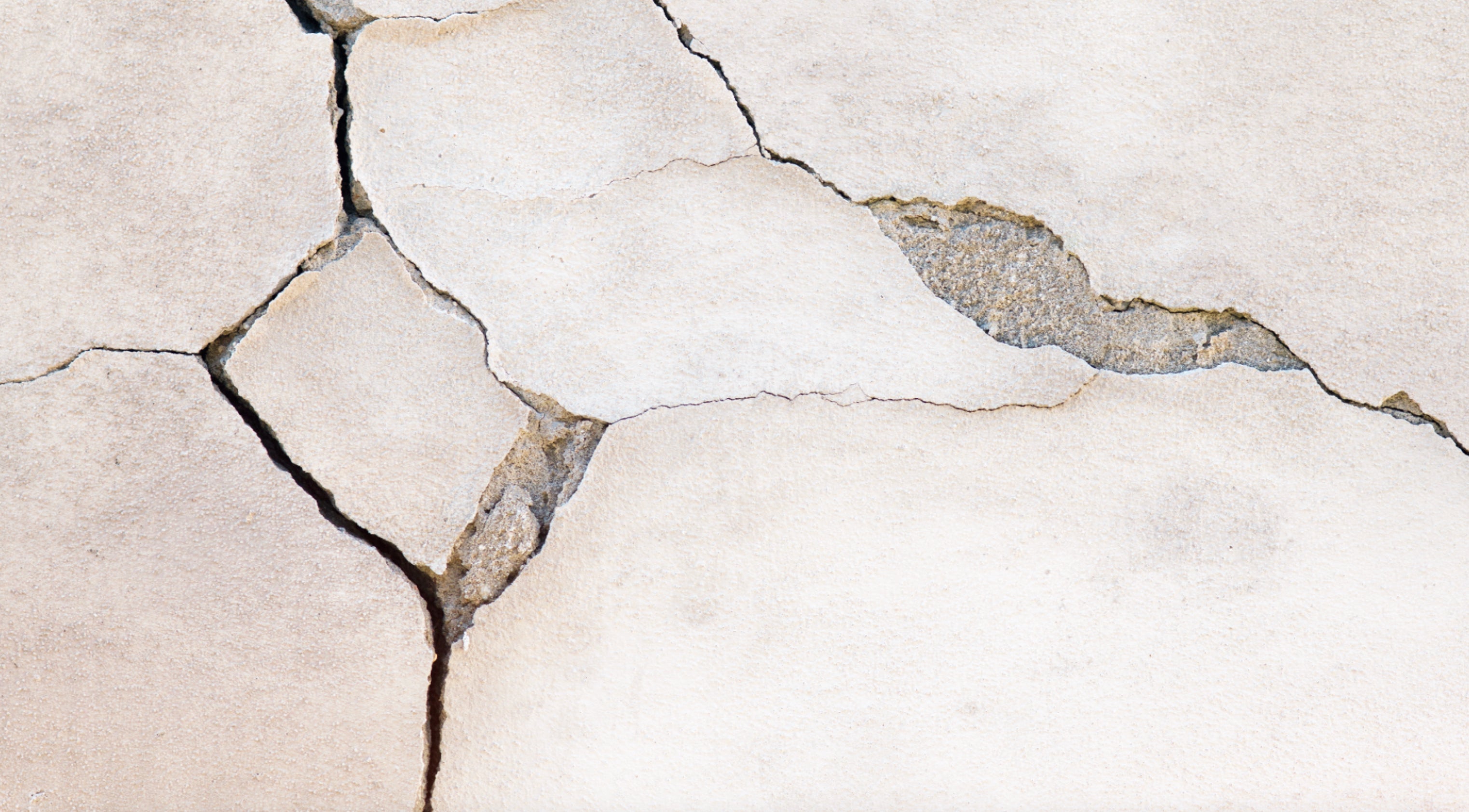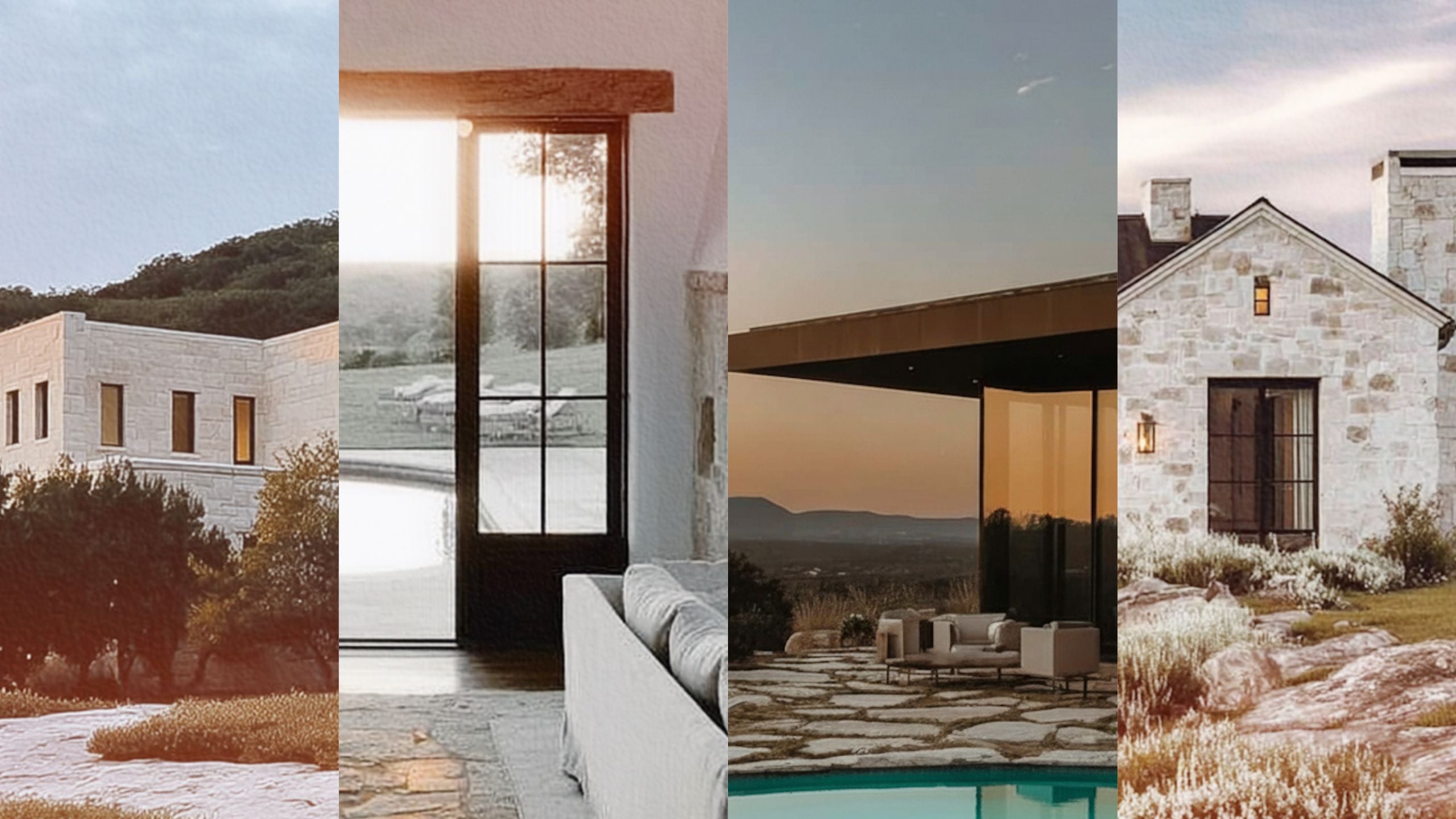When I first moved to the Hill Country, I thought I understood what "building challenges" meant. Then I watched my neighbor's brand-new deck warp within six months, saw foundation cracks appear in a friend's "dream home" after just one drought-to-flood cycle, and experienced my own learning curve with everything from well water issues to the reality of what Texas weather can do to a roof.
I've learned that building successfully in this region requires understanding challenges that simply don't exist in the city. From temperature extremes that would shock newcomers to soil conditions that can make or break your foundation, this dynamic environment demands respect—and knowledge.
Whether you're planning your weekend retreat, considering a permanent move, or evaluating an investment property, understanding these realities upfront can save you thousands of dollars and years of frustration. Let me share what I've learned about building durably in one of Texas's most beautiful—and demanding—regions.
Understanding Texas Hill Country Climate Challenges for Construction
One of the first things that surprised me about Hill Country living was just how extreme the weather really is. We've experienced freeze events where temperatures dropped from comfortable spring-like conditions to dangerous lows within days, then bounced back just as quickly. The most recent severe freezes have been perfect examples—watching temperatures plummet 60+ degrees in a matter of days, then rebound dramatically, really drives home what local builders face.
The National Weather Service confirms what locals know instinctively: Texas experiences some of the most variable weather conditions in the United States, with temperature swings of 50°F or more occurring within 24-hour periods¹. During these extreme events, I've seen brand-new homes develop foundation cracks and watched building materials respond to thermal shock in real time.
This isn't just uncomfortable weather—it's a construction challenge that affects every material choice you'll make.
Temperature Extremes That Test Every Material
In my years here, I've seen summer days hit 108°F and by winter nights that dropped to 15°F. That's not unusual for the Hill Country, where we regularly experience summer highs exceeding 100°F and winter lows occasionally dropping below 20°F².
What I didn't anticipate was how this constant expansion and contraction cycle affects building materials. A cohort recently showed me cracks in their concrete driveway that appeared after just one season—classic thermal stress damage. Research from the University of Texas at Austin's Civil Engineering Department confirms this isn't rare: repeated thermal cycling can reduce the lifespan of exterior building materials by up to 30% compared to more moderate climates³.
I've personally witnessed how this plays out:
- Foundation settling that creates doors that suddenly won't close properly
- Roof membrane failures where the constant movement finally wins
- Siding that separates at joints, creating entry points for moisture
- Windows and doors that bind in summer and gap in winter
The Texas A&M Forest Service reports that wood materials in the Hill Country can experience moisture content variations of 8-12% seasonally⁴. Translation? That beautiful cedar deck you're planning will move more than you think, and if your builder doesn't account for it, you'll be dealing with gaps, warping, or both.
Humidity: The Hidden Challenge
Coming from the Midwest (I'm licensed in real estate in Missouri, too), I thought I understood humidity. But Hill Country humidity is different—it's the extreme swings that get you. According to the Texas State Climatologist's office, we can go from 15% humidity during drought conditions to over 90% during summer storms⁵.
The Texas Department of State Health Services identifies moisture-related building problems as a leading cause of indoor air quality issues in the state⁶. In practical terms, this means:
- Mold can develop quickly in poorly ventilated spaces
- Metal hardware corrodes faster than expected
- Wood rot appears in areas that seem properly sealed
- Insulation loses effectiveness when it gets damp
Weather Patterns That Keep You on Your Toes
Hill Country sits at the intersection of multiple weather systems, creating what meteorologists politely call "unpredictable conditions." The National Oceanic and Atmospheric Administration (NOAA) reports that our region experiences an average of 3-5 severe thunderstorm events per year, with winds exceeding 58 mph and hail larger than one inch in diameter⁷.
But statistics don't capture what it's like to watch a beautiful morning turn into a severe thunderstorm warning within an hour. I've seen this happen dozens of times, and it's why smart Hill Country builders design for the worst-case scenario, not the average day.

Flash flooding deserves special mention here. The U.S. Geological Survey notes that Hill Country watersheds can experience peak flood flows within 30-60 minutes of rainfall onset⁸. We saw how devastating this was come July 4, 2025. If you're looking at property near a creek that "never floods," ask someone who's lived here for twenty years, and, even then, don't make assumptions; the aforementioned flood showed us to not only lean on historical patterns, but expect the unexpected. That peaceful creek can become a raging torrent faster than you'd believe possible.
Foundation Realities in Hill Country Soil
Foundation issues are expensive to fix and often preventable with the right knowledge upfront.
The Soil Situation Nobody Warns You About
The Hill Country sits atop the Edwards Plateau, which sounds geological and boring until you're dealing with the practical implications. According to the Natural Resources Conservation Service, our predominant soil types include Austin clay, Denton clay, and Brackett-Eckrant complex soils⁹. These clay-rich soils have what engineers call a "high plasticity index"—basically, they expand dramatically when wet and shrink significantly when dry. I see this with the clay at my 'pond'; we didn't add bentonite or any type of clay, yet it's as clay-laden as can be (pictured below).


How dramatically? Research from the Texas Transportation Institute shows that expansive clay soils in central Texas can generate swelling pressures exceeding 10,000 pounds per square foot¹⁰. That's enough force to crack a concrete foundation like it's made of paper.
I've walked through homes where doors that used to close easily suddenly stick every summer, where tile floors have developed cracks that weren't there last year, and where homeowners point to foundation cracks and say, "That wasn't there last month." The cyclic nature of Texas weather—drought followed by heavy rain—creates a perfect storm for foundation movement.
During drought periods, clay soils shrink and pull away from foundations, creating gaps. When the rains finally come, water rushes into these gaps, causing rapid soil expansion. It's like your foundation is sitting on a sponge that's constantly being squeezed and released.

Foundation Solutions That Actually Work
After seeing too many foundation problems in my clients' homes, I've learned to appreciate builders who understand local soil conditions. The Texas Board of Professional Engineers recommends specific foundation approaches for our expansive soil conditions¹¹:
Drilled pier foundations that extend to stable limestone bedrock are the gold standard here. Yes, they cost more upfront—typically 20-40% more than conventional foundations—but I've never seen foundation movement issues in properly designed pier systems.
Post-tension slab foundations with adequate edge lift protection work well when designed correctly. The key is working with an engineer who understands local soil conditions, not someone applying standard designs from other regions.
Proper site drainage isn't optional—it's germane. I always walk properties with clients to look at how water moves during rain events. Poor drainage isn't just an inconvenience; it's a foundation threat.
Severe Weather: More Than Just an Inconvenience
Living through Hill Country weather has taught me respect for what nature can dish out. The Insurance Institute for Business & Home Safety reports that Texas leads the nation in wind-related property damage, with annual losses exceeding $1 billion¹². The Hill Country's elevated terrain and open topography can create wind acceleration effects, with gusts 20-30% higher than reported weather station readings.
Wind Damage I've First-Hand Experienced
I've seen what 80-mph winds can do to roofing materials when, amid my house being built, our roof came completely off. Shingles don't just blow off—they can peel back like opening a can, exposing the entire roof deck to water damage. Window and door systems breach when debris becomes projectiles. I've walked through homes where flying debris punched holes through exterior walls. In my personal experience, amid my current house being built, the roof was blown a good 30 feet off the steel structure.

The American Society of Civil Engineers recommends design wind speeds of 90-110 mph for most of the Hill Country region¹³. Asking about wind-resistance features on properties isn't paranoia—it's practical planning.
Hail: The Great Equalizer
We live in "Hail Alley," and the National Weather Service Storm Prediction Center confirms we average 7-9 hail days per year, with stones larger than 1.75 inches occurring annually¹⁴. I've watched softball-sized hail destroy roofs, dent siding, and turn car windshields into spider webs.
Different roofing materials handle hail differently:
- Class 4 impact-resistant asphalt shingles can withstand 2-inch hail
- Metal roofing typically dents but rarely punctures
- Clay and concrete tiles may crack with large hail impacts
- Standard asphalt shingles fail with hail larger than 1.25 inches
Impact-resistant roofing can pay for itself the first time a severe storm hits.
Material Degradation: The Sun's Relentless Attack
One thing that shocked me about Hill Country living was how quickly the intense sun affects building materials. The Texas Solar Energy Society reports that we receive approximately 2,800-3,000 hours of direct sunlight annually¹⁶. That's beautiful for lifestyle but tough on anything exposed to it.
Paint and Coating Realities
I've learned to budget for exterior paint every 5-7 years instead of the 8-10 years I was used to in Austin. The American Coatings Association explains that UV radiation breaks down polymer chains in paint films, leading to chalking, fading, and eventual failure¹⁷. When I'm evaluating properties with clients, fresh exterior paint can indicate good maintenance—or hide underlying issues.
Plastic and Vinyl: Plan for Replacement
Research from the National Institute of Standards and Technology shows that UV exposure causes polymer degradation in vinyl siding and plastic components, resulting in brittleness and color changes within 10-15 years¹⁸. I've seen vinyl siding that looked great from a distance but cracked when touched. It's why I always recommend clients budget for exterior material replacement in their long-term planning.
Wood: Beautiful but High-Maintenance
The U.S. Forest Service reports that unprotected wood can lose surface fibers and develop checking (small cracks) within 6-12 months¹⁹. I love the look of natural wood in Hill Country homes, but I always counsel clients about the maintenance commitment involved.
Regional Building Considerations: What City Folks Might Not Expect
Moving from urban areas to the Hill Country involves adjustments most people don't anticipate. Local regulations, infrastructure limitations, and geological conditions create unique challenges that can impact both construction costs and timelines.
Zoning and Development: Stricter Than You'd Think
The Hill Country Alliance reports that many counties have implemented strict development regulations to preserve the area's natural character²¹. These often include:
- Impervious cover limitations (often 25% or less)
- Native vegetation preservation requirements
- Scenic roadway development restrictions
- Groundwater protection ordinances
I always advise clients to research these restrictions before falling in love with a property. What looks like a perfect building site might have limitations that make your dream home impossible or prohibitively expensive.
Utility Realities: Plan and Budget Accordingly
Water Systems: Many areas rely on private wells drawing from the Trinity or Edwards aquifers. The Texas Commission on Environmental Quality requires well permits and may restrict pumping during drought conditions²². Well installation can cost $15,000-40,000 depending on depth and flow requirements.
Septic Systems: The Texas Department of Health Services reports that shallow soils over limestone bedrock can create challenges for conventional septic systems²³. Alternative designs or aerobic treatment units can cost significantly more than standard systems.
Electrical Service: Remote locations may require significant investment in electrical service extensions, with costs potentially exceeding $20,000 per mile for new service lines²⁴. I always factor this into property evaluations with clients.
Weather-Resistant Materials: Investing in Longevity
After seeing too many maintenance headaches, I've become a strong advocate for investing in quality materials upfront. Modern material science offers excellent solutions for our challenging environment.
Roofing: Your First Line of Defense
The Insurance Institute for Business & Home Safety reports that Class 4 impact-resistant shingles reduce hail damage claims by up to 35%²⁵. When I'm showing properties, impact-resistant roofing is always a selling point.
Metal roofing has proven excellent for Hill Country conditions. The Metal Roofing Alliance reports that properly installed systems last 40-70 years²⁶. They provide superior wind resistance and reflect solar heat, reducing cooling costs by 10-25%. Several of my clients have chosen metal roofing for new construction and been thrilled with the performance.
Siding: Durability Matters
Fiber cement siding has gained popularity here due to its resistance to moisture, insects, and fire. The American Fiber Cement Corporation reports that these products maintain their appearance and structural integrity for 30-50 years with minimal maintenance²⁷. It costs more initially but often pays for itself in reduced maintenance.
Engineered wood siding products with advanced preservative treatments offer improved resistance to moisture and insect damage compared to traditional wood materials²⁸. When clients want the wood look without the maintenance, these products often provide a good compromise.
Foundation Technologies: Do It Right the First Time
Post-tension concrete slabs have proven effective for expansive soil conditions. The Post-Tensioning Institute reports that properly designed systems can accommodate soil movements of 2-4 inches with minimal cracking²⁹. While they cost more initially, the long-term stability makes them worthwhile for many applications.
Drilled pier foundations extending to bedrock provide excellent stability but require specialized equipment and can cost 20-40% more than conventional foundations³⁰. For critical applications or particularly challenging soil conditions, they're often the best investment.
Preventative Maintenance: Protecting Your Investment
Research from the National Association of Home Builders indicates that preventative maintenance can extend building component life by 50-100%³¹. After seeing the cost of deferred maintenance, I always share maintenance schedules with my clients.
Inspection Priorities
Foundation monitoring: I recommend semi-annual checks for new cracks or movement. Small issues caught early are much less expensive to address.
Roof assessments: Annual inspections, with additional checks after severe weather. Most roof damage starts small and grows quickly if ignored.
Drainage systems: Quarterly cleaning and inspection of gutters and downspouts. Water management is critical here.
Exterior surfaces: Annual review of paint, sealants, and caulking. Prevention costs much less than repair.
Seasonal Maintenance Guidelines
Spring: Inspect and repair winter damage, clean and test HVAC systems, check irrigation systems Summer: Monitor foundation watering, inspect roof for storm damage, maintain ventilation systems Fall: Prepare for winter, seal exterior cracks, winterize outdoor plumbing Winter: Monitor for ice damage, maintain heating systems, check for pest entry points
Working with the Right Professionals
The complexity of Hill Country construction makes professional consultation essential. The Texas Board of Professional Engineers requires licensed engineers to design foundations in areas with known expansive soil conditions³².
After working with dozens of contractors and seeing both excellent and problematic results, I've learned that local experience matters enormously. Working with professionals who understand our specific challenges provides several advantages:
- Knowledge of local soil and climate conditions
- Familiarity with county and municipal regulations
- Established relationships with reliable contractors and suppliers
- Understanding of insurance and warranty considerations
Building code compliance is mandatory and helps ensure safety and performance. The Texas Department of Licensing and Regulation enforces statewide building codes, with many counties adopting additional local requirements³³.
Making Smart Investment Decisions
Understanding these construction challenges helps property buyers and investors make informed decisions about Hill Country real estate. While building costs may be 10-20% higher than urban areas due to material requirements and site challenges, properly constructed buildings often appreciate faster and maintain value better over time.
From my experience helping families navigate these decisions, key factors for success include:
- Thorough site evaluation before purchase (I always recommend geological surveys for custom construction)
- Realistic budgeting for quality construction (cutting corners often costs more in the long run)
- Proper insurance coverage for local risks (make sure your policy covers the specific challenges we face here)
- Ongoing maintenance planning and execution (budget 1-2% of home value annually for maintenance)
The Hill Country Advantage
Despite these challenges—or perhaps because of them—the Hill Country continues to attract families seeking authentic Texas living. The unique character and natural beauty of this region make the extra planning and investment worthwhile for those who appreciate what it offers.
Whether you're considering a weekend retreat, permanent relocation, or investment property, understanding these realities upfront enables better decision-making and more successful outcomes. The families I've helped who took time to understand these considerations and planned accordingly have created homes that will serve them well for generations.
Building successfully in the Hill Country isn't about avoiding challenges—it's about understanding them and planning accordingly. With proper knowledge, quality materials, and experienced professionals, you can create a beautiful, durable home that stands up to everything Texas weather can deliver while providing the lifestyle that drew you here in the first place.
References
- National Weather Service, Austin/San Antonio Weather Forecast Office. "Texas Climate Variability." weather.gov
- Texas State Climatologist Office. "Temperature Extremes in Central Texas." climatexas.tamu.edu
- University of Texas at Austin, Department of Civil Engineering. "Thermal Cycling Effects on Building Materials." 2019 Research Report.
- Texas A&M Forest Service. "Wood Material Performance in Texas Climates." 2020 Technical Bulletin.
- Texas State Climatologist Office. "Humidity Patterns in the Hill Country Region."
- Texas Department of State Health Services. "Indoor Air Quality and Moisture Control." dshs.texas.gov
- National Oceanic and Atmospheric Administration, Storm Prediction Center. "Severe Weather Statistics for Central Texas."
- U.S. Geological Survey. "Flash Flood Characteristics of Hill Country Watersheds." Water Resources Investigation Report.
- Natural Resources Conservation Service. "Soil Survey of Central Texas Counties." websoilsurvey.sc.egov.usda.gov
- Texas Transportation Institute. "Expansive Clay Research Program." 2018 Final Report.
- Texas Board of Professional Engineers. "Foundation Design Guidelines for Expansive Soils."
- Insurance Institute for Business & Home Safety. "Wind Damage Statistics by State." ibhs.org
- American Society of Civil Engineers. "Minimum Design Loads for Buildings and Other Structures." ASCE 7-22.
- National Weather Service Storm Prediction Center. "Hail Climatology for Texas." spc.noaa.gov
- Edwards Aquifer Authority. "Flood Characteristics of the Edwards Plateau." edwardsaquifer.org
- Texas Solar Energy Society. "Solar Resource Assessment for Central Texas." txses.org
- American Coatings Association. "UV Degradation of Exterior Coatings." paint.org
- National Institute of Standards and Technology. "Polymer Degradation Under UV Exposure." nist.gov
- U.S. Forest Service. "Weathering of Wood Materials in Outdoor Exposure." Research Paper.
- American Concrete Institute. "Thermal Effects on Concrete Structures." ACI Committee Report.
- Hill Country Alliance. "Development Regulations in the Texas Hill Country." hillcountryalliance.org
- Texas Commission on Environmental Quality. "Groundwater Well Permitting." tceq.texas.gov
- Texas Department of Health Services. "On-Site Sewage Facility Requirements."
- Texas Electric Cooperatives. "Rural Electric Service Extension Costs." 2022 Rate Schedule.
- Insurance Institute for Business & Home Safety. "Impact-Resistant Roofing Performance Study."
- Metal Roofing Alliance. "Longevity and Performance of Metal Roofing Systems." metalroofing.com
- American Fiber Cement Corporation. "Durability Testing of Fiber Cement Products."
- APA - The Engineered Wood Association. "Treated Wood Siding Performance." apawood.org
- Post-Tensioning Institute. "Post-Tensioned Foundations for Expansive Soils." post-tensioning.org
- International Association of Certified Home Inspectors. "Foundation Cost Comparison Study."
- National Association of Home Builders. "Preventative Maintenance Guidelines." nahb.org
- Texas Board of Professional Engineers. "Engineering Requirements for Foundation Design." tbpe.texas.gov
- Texas Department of Licensing and Regulation. "Building Code Enforcement." tdlr.texas.gov
DISCLAIMER: The information provided in this article is for general educational purposes only and should not be construed as professional advice. While every effort has been made to ensure accuracy through research and authoritative sources, the author, a licensed Texas real estate agent, assumes no responsibility or liability for any errors, omissions, or damages arising from the use of this information. Property construction and maintenance needs can vary significantly based on location, construction methods, age, soil conditions, and numerous other factors. Readers are strongly encouraged to consult with qualified professionals, including but not limited to licensed contractors, structural engineers, geotechnical engineers, HVAC specialists, and other relevant experts before making any construction or maintenance decisions. Local building codes, regulations, and best practices may vary by jurisdiction and should always be verified with appropriate authorities. The views expressed here are general observations based on available research and do not constitute specific recommendations for any individual property or construction project. Your specific construction needs may differ significantly from those discussed in this article.












0 comments